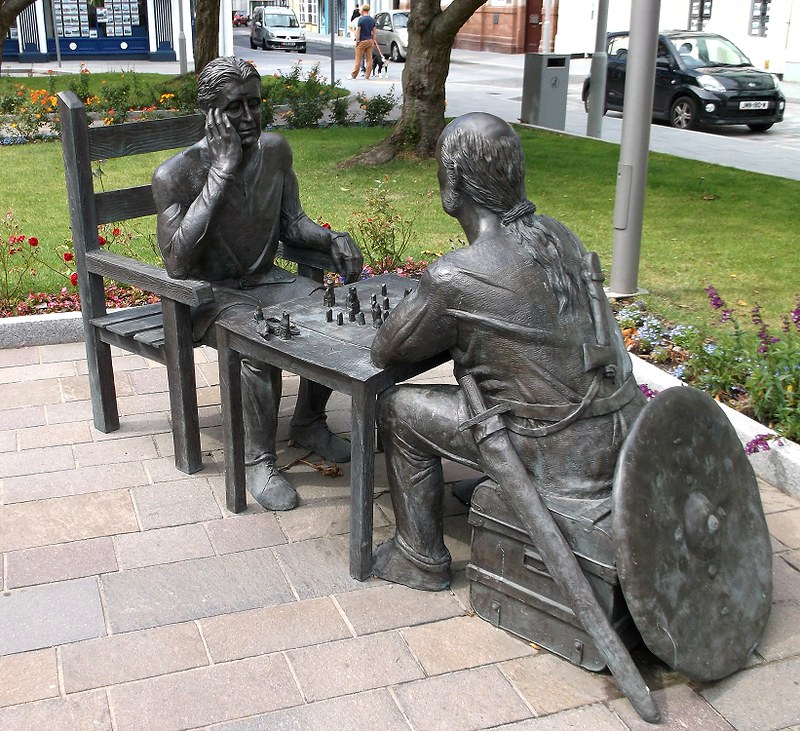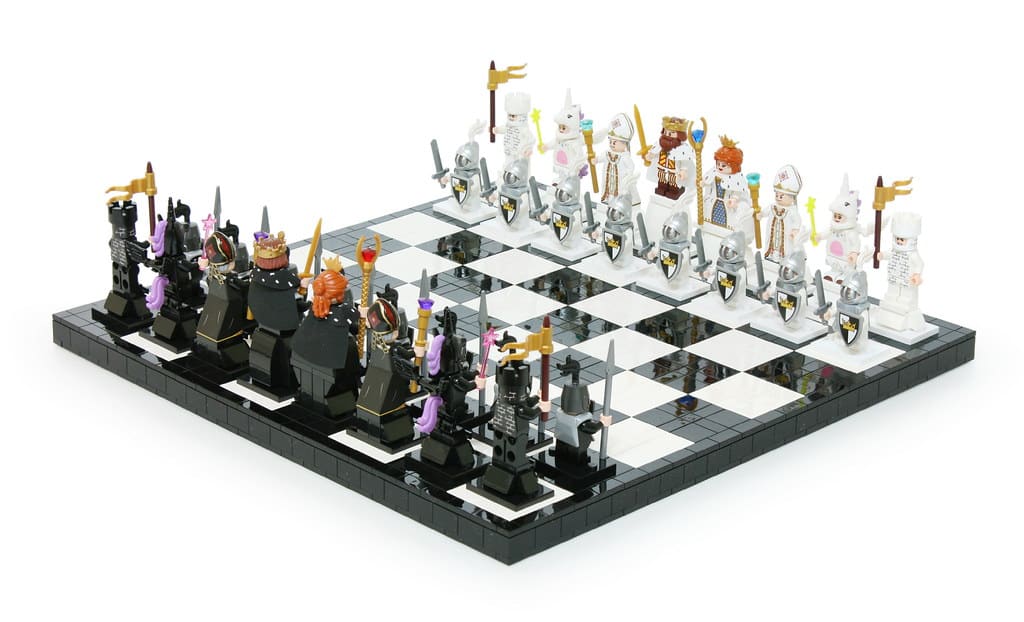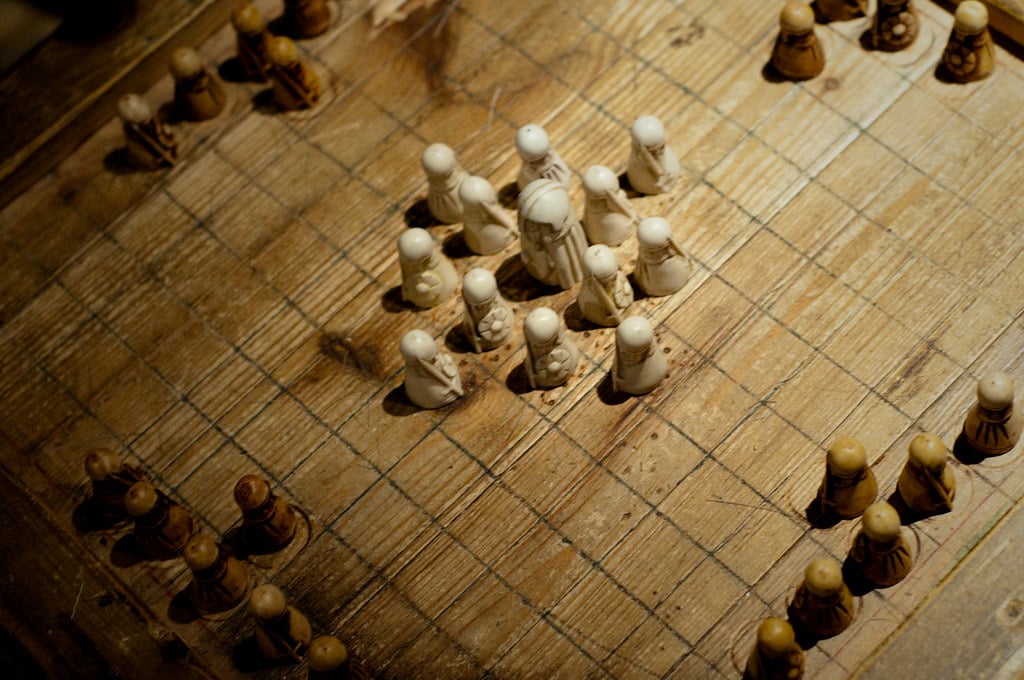The game of chess has been around for centuries and is still one of the most popular board games today. However, the original chess game featured different rules, pieces, and a different board size. This game is known as Viking chess, or Hnefatafl.
Viking chess is a two-player strategy game that originated in Scandinavia during the Viking age. It was a popular game among Viking warriors, who would play it during their long voyages at sea. The game is still popular today, and there are many variations on the traditional rules.
Viking chess is played on an 11×11 board, with each player having 16 pieces. The goal of the game is to capture the opponent's king piece while protecting your own king. The pieces have different abilities and move in different directions, making the game more challenging and exciting.
Viking chess is an exciting and challenging game that can be enjoyed by both experienced and novice players alike. With its unique rules, pieces and board size, Viking chess offers a unique and enjoyable game that can be played in both casual and competitive settings.
Viking chess, also known as Hnefatafl, is an ancient Scandinavian board game, which is believed to have been played since 400 AD. It is a strategy game that consists of two players and a board with a square design. The goal of the game is to capture the king piece, and the game can be played on either a single board or two different boards. The pieces are usually divided into two teams, the attackers and the defenders. The attackers attempt to capture the king piece, while the defenders try to protect it. The game can end in either a victory for the attackers or a draw.
The pieces used in Viking chess are divided into three distinct groups; the king, the attackers and the defenders. The king is the most important piece and must be moved around the board in order to win. The attackers are the pieces that are used to capture the king, while the defenders attempt to protect it. The game is usually played on a square board with a size of 11×11 or 13×13 squares.
Viking chess can be played with different strategies, depending on the skill of the players. The game can be quite challenging, as it requires players to think carefully about their moves and how they can best protect their pieces. There are also some variations of the game, such as Tawlbwrdd, which adds additional rules and pieces.

Table of Contents
What is Viking chess called?
Viking chess, also known as Tafl, is an ancient board game that was popular in Scandinavia during the Viking Age. It is played on a board made up of squares and two armies with 7 pieces each. The object of the game is to capture the opponent's king piece. The game is believed to have originated in the 8th century and is still played today. It has a different set of rules and strategies than traditional chess.
Tafl is an interesting game that requires players to think strategically and plan their moves carefully. It is believed to have been played in Norse courts, where it was seen as a game of strategy and tactics. The game is a great way to develop analytical skills and hone logical thinking. It is also a fun way to pass time and get to know your opponent.
The game is played on a board divided into nine or eleven squares and is usually played between two people. The game is usually played on a wooden board with pieces crafted from stone or wood. The pieces are divided into two sides – the attackers and the defenders. The goal of the game is for the attackers to capture the king piece of the defenders.
Tafl is an enjoyable game that can be played with two people or in teams. It is a great way to spend time with friends and family and can even be played online. So, if you’re looking for a new and exciting game to play – why not try Viking chess?

What are the rules of Viking chess?
Viking chess, also known as Hnefatafl, is an ancient Nordic game of strategy. It was played by the Vikings and has been around since the 12th century. The game is played on a square board, consisting of 11×11 squares. Each player has pieces, usually of two different colours, that they can move around the board. The object of the game is to capture the opponents king piece.
The rules of Viking chess are relatively simple. Each player begins with 16 pieces, which are usually black and white. The pieces are placed on specific squares of the board according to the game's traditional setup. The players then take turns moving one of their pieces to an adjacent square. The goal is for one player to capture the other's king piece, which is located in the middle of the board.
In addition to the basic rules, there are several additional rules that can be used to make the game more interesting. These include the use of fortresses, which are special squares that cannot be entered by pieces of the other player. There are also rules for how pieces are captured, as well as how pieces are “promoted” when they reach the other side of the board.
Viking chess is a great game to play with family and friends. It is a great way to learn strategy and practice problem-solving skills. The game can be played with any number of players, so it is a great game to play with a group.
Was chess invented by Vikings?
Chess is a game of strategy and skill that is believed to have originated in Northern India, around the 6th century AD. However, some believe that the game was actually invented by Vikings. During their travels and raids, the Vikings encountered the game and brought it back to Scandinavia, thus introducing it to the rest of Europe. This theory is supported by the fact that there are several pieces and moves in chess that have names derived from Old Norse.
The game of chess as we know it today is believed to have been developed during the 15th century in Europe. The rules were standardized and the game spread rapidly across the continent. Today, chess is an incredibly popular game, with millions of people playing it all over the world.
Vikings are often associated with chess because of the names of certain pieces and moves. The rook, for example, is derived from the Old Norse word “hrokr,” which means “tower.” The bishops are derived from the Old Norse word “biskup,” meaning “bishop.” The knight is derived from the Old Norse word “kniht,” meaning “horseman.”
While the origin of chess is still debated, it is likely that the game was influenced by the Vikings. Whether or not the game was actually invented by them remains a mystery. However, it is clear that their influence is still felt in the game today.
How many pieces are in Viking chess?
Viking chess, also known as Tafl, is an ancient Scandinavian board game. It is believed to have been played by the Vikings from the 9th to the 11th centuries. The game is played on a 7×7 board and the pieces are divided into two teams. Each team has 16 pieces, 8 white pieces and 8 black pieces. The goal of the game is to capture the king piece or to occupy the entire board with pieces of one's own colour.
The pieces in Viking chess can move in any direction, but cannot jump over other pieces. The pieces can capture other pieces by surrounding them on two opposite sides. The king piece can move one space at a time, but cannot capture any other pieces. The pieces cannot move onto squares occupied by the king. Therefore, in total there are 32 pieces in Viking chess – 16 white pieces and 16 black pieces.
Viking chess is a fun, fast-paced game based on the traditional chess game. It has a unique set of rules that require strategic thinking and quick reflexes. Players must be prepared to think on their feet and outsmart their opponents.
The game is easy to learn, but difficult to master. It requires both strategy and speed. Players must think several moves ahead in order to be successful.
Viking chess is a great way to spend time with family and friends while honing your strategic skills. It provides hours of entertainment and can be enjoyed by players of all ages and skill levels.






